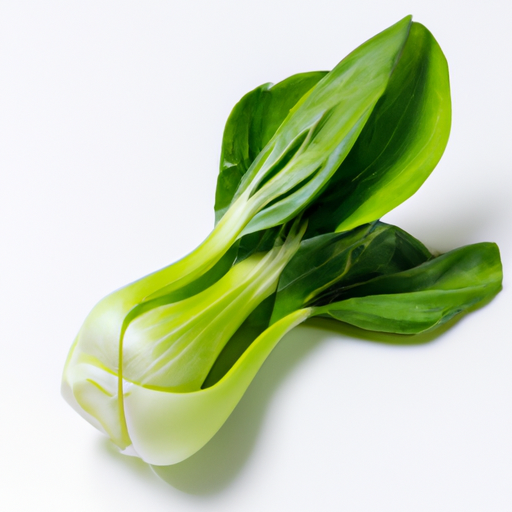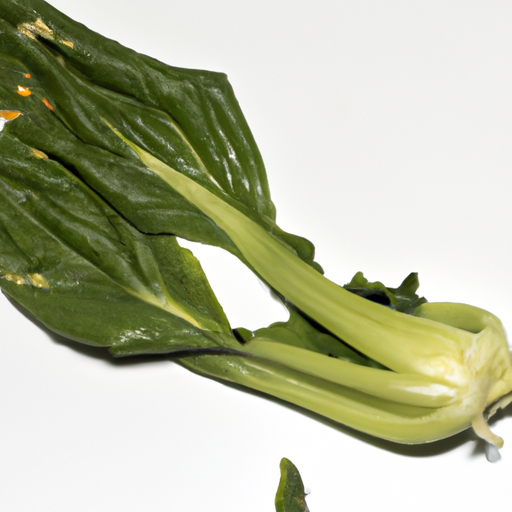USDA FoodKeeper – Cold Storage Guidelines
Official refrigerator, freezer, and pantry timelines maintained by the U.S. Department of Agriculture.
Visit USDA FoodKeeperPacked with nutrients and a delightful crunch, this versatile leafy green adds a unique touch to stir-fries and salads alike. To enjoy its fresh flavor, store it in the fridge and aim to use it within a week, but don’t worry—it's still safe to eat for a couple of days after its prime.
Get our 16-page guide with exact timelines for 70+ foods. Save €1,500+/year by knowing what's actually safe to eat.


Fridge
32°F to 40°F (0°C to 4.4°C)
Wrapped in damp paper towel, placed in a perforated plastic bag
7 days
Yellowing leaves, slimy texture
Stir-fries, soups, salads
Bok choy
Sure thing! So, expiration dates and best quality dates for Pak Choy can be a bit confusing, but I got you covered! The expiration date on Pak Choy indicates when it's no longer safe to eat due to spoilage or food safety concerns. Once that date passes, it's best to toss it out to avoid getting sick. On the other hand, the best quality date refers to the period when Pak Choy will taste its freshest and be at its peak flavor. After that date, the quality may decline, but it doesn't mean it's unsafe to eat. For example, if your Pak Choy has an expiration date of tomorrow, but it still looks and smells fine, you can probably cook it up today without any issues. However, if it's a few days past the best quality date, it might be a bit wilted or less flavorful, but still okay to use in a stir-fry or soup. Personally, I tend to follow the expiration date for leafy greens like Pak Choy just to be safe, but a day or two past the best quality date is usually not a big deal for me if it still seems okay.
To determine if Pak Choy has spoiled, look for wilting or yellowing leaves, mold growth, or a slimy texture. A foul smell, especially a strong and unpleasant odor, is also a sign of spoilage. Fresh Pak Choy should have crisp, firm stems and vibrant green leaves.
Oh, Pak Choy - a delightful vegetable that can elevate any stir-fry. But hey, did you know there are some foodborne illness risks associated with it? Let's chat about staying safe while enjoying your greens! One common risk with Pak Choy is contamination from bacteria like E. coli or Salmonella. To avoid any unwanted tummy troubles, always make sure to wash your Pak Choy thoroughly under running water before cooking or consuming. Cross-contamination is another sneaky culprit, so keep your cutting board and utensils clean, especially if they've come into contact with raw meats. If you start feeling symptoms like nausea, vomiting, diarrhea, or abdominal pain after eating Pak Choy, it might be a sign of foodborne illness. Stay hydrated and seek medical help if symptoms persist. To up your safety game, store Pak Choy in the fridge away from raw meats and use it within a few days of purchase. Remember, a little caution goes a long way in enjoying your Pak Choy dishes without any unwanted surprises!
Hey there! Pak choy, or bok choy, is a fantastic veggie to have on hand. To keep it fresh longer, here are some tips and hacks: 1. **Storage**: Store unwashed pak choy in a plastic bag with a paper towel to absorb excess moisture. Keep it in the crisper drawer of your fridge. It should last about a week this way. 2. **Revive Wilting Pak Choy**: If your pak choy starts to wilt, don't throw it out just yet. Give it an ice bath for about 30 minutes to crisp it back up. Works like a charm! 3. **Meal Prep**: Slice and wash your pak choy as soon as you bring it home. Store it in an airtight container lined with a damp paper towel. This way, it's ready to go for stir-fries or salads during the week. 4. **Freezing**: Pak choy can be blanched and frozen for longer storage. Just make sure to blanch it for a minute or two, then shock it in an ice bath before freezing. I've found these tips super handy in my own kitchen. Hope they help you keep your pak choy fresh and delicious!
Hey there! Let's talk about Pak Choy, one of my favorite leafy greens! Did you know that Pak Choy, also known as Bok Choy or Chinese cabbage, has been cultivated in China for over 6,000 years? Crazy, right? In Chinese culture, Pak Choy symbolizes prosperity and good fortune because its name sounds like "hundred treasures" in Cantonese. It's often included in traditional dishes during festivals and celebrations for this reason. Here's a fun fact: Pak Choy is not only delicious but also incredibly nutritious! It's packed with vitamins A, C, and K, as well as minerals like calcium and potassium. Plus, it's low in calories, making it a great addition to a healthy diet. Next time you're at the market, grab some Pak Choy and try stir-frying it with garlic and soy sauce for a quick and tasty side dish. It's versatile and adds a unique flavor to any meal. Enjoy exploring the world of Pak Choy!
If Pak Choy has been left at room temperature for a few hours, it's generally safe to eat as long as it appears fresh and shows no signs of spoilage. However, for optimal safety, it's recommended to refrigerate it within 2 hours of preparation.
Once opened, Pak Choy should be consumed within 2 days for the best quality. Store it in the fridge in an airtight container to maintain freshness and prevent spoilage.
The type of container used to store Pak Choy can impact its shelf life. Opt for airtight containers to maintain freshness and prevent moisture loss, which can lead to wilting. Avoid storing Pak Choy in open containers as it can cause it to spoil faster.
Freezing Pak Choy can cause changes in texture upon thawing. The leaves may become wilted and softer compared to fresh Pak Choy. To minimize texture changes, blanch Pak Choy before freezing and use it in cooked dishes after thawing.
While the shelf life of Pak Choy is generally consistent across brands, variations in packaging quality and storage conditions can affect freshness. Always check the expiration date and choose brands known for their quality and freshness.
Cooking Pak Choy can extend its shelf life by a day or two, as the heat helps kill bacteria that may cause spoilage. However, refrigerate any leftover cooked Pak Choy promptly and consume it within 2 days for optimal safety and quality.
Pak Choy tends to last longer in cooler temperatures, such as winter, as cold environments slow down the ripening process and help maintain freshness. Store Pak Choy in the fridge during warmer months to extend its shelf life.
When transporting Pak Choy for a few hours, pack it in a cooler with ice packs to maintain a cold temperature and prevent wilting. Avoid leaving Pak Choy in a hot car or under direct sunlight to ensure food safety during travel.
Stop guessing about expiration dates. Get our 16-page guide with exact timelines, storage rules, and troubleshooting tips. Save €1,500+/year.
Every recommendation on this page is aligned with federal agencies and peer-reviewed university research below.
Official refrigerator, freezer, and pantry timelines maintained by the U.S. Department of Agriculture.
Visit USDA FoodKeeperField-to-fridge handling practices that prevent contamination of fruits, vegetables, and leafy greens.
Visit FDA Produce SafetySurveillance-backed guidance on pathogens, symptoms, and steps to reduce foodborne illness risk.
Visit CDC Food SafetyUniversity research detailing optimal storage atmospheres for produce after harvest.
Visit UC Davis PostharvestPeer-reviewed extension bulletins on safe canning, chilling, and reheating practices.
Visit Penn State ExtensionNeed deeper reading? Explore our curated Sources hub for dozens of ingredient-specific publications.
Scan your food directly and get instant safety info using our AI-powered camera feature.
Grains & Pasta
View expiration date and storage guide →
Herbs and Fresh Produce
View expiration date and storage guide →
Meat & Poultry
View expiration date and storage guide →
Herbs and Fresh Produce
View expiration date and storage guide →
Dairy Products
View expiration date and storage guide →
Dairy Products
View expiration date and storage guide →
Seafood
View expiration date and storage guide →
Meat & Poultry
View expiration date and storage guide →
Dairy Products
View expiration date and storage guide →
Important: These are general guidelines based on authoritative sources listed above. Always use your best judgment and when in doubt, throw it out. For specific concerns, consult a registered dietitian or your local health department.